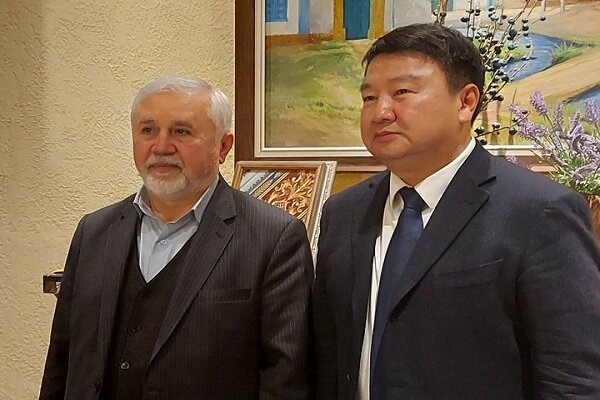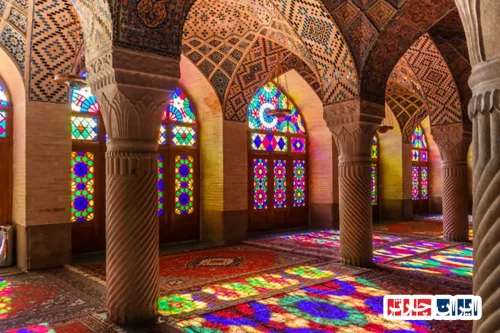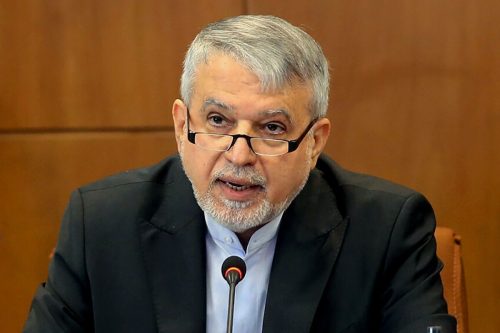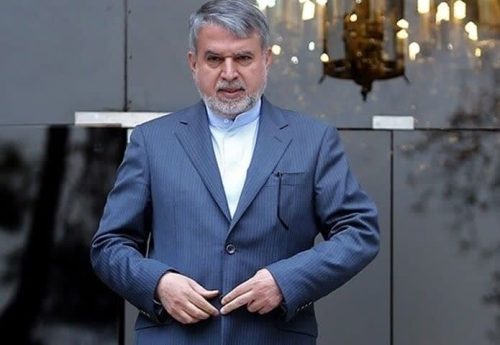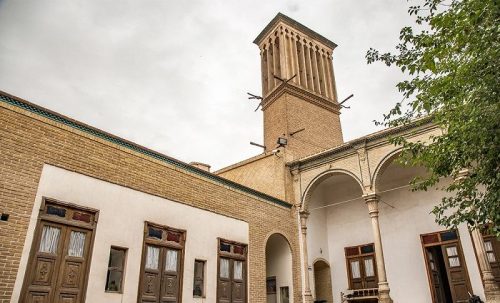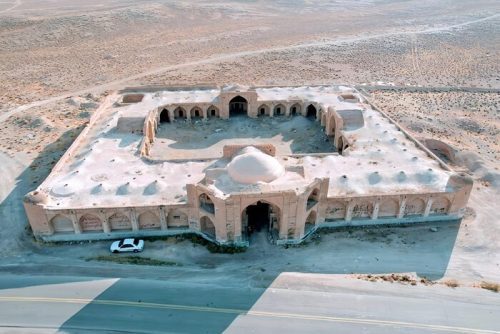News Source : https://www.mehrnews.com/news/6309060/%D8%B1%D8%A7%D8%A8%D8%B7%D9%87-%D8%A7%DB%8C%D8%B1%D8%A7%D9%86-%D9%88-%DA%86%DB%8C%D9%86-%D8%B1%D8%A7%D9%87%D8%A8%D8%B1%D8%AF%DB%8C-%D9%88-%D8%A7%D8%B3%D8%AA%D8%B1%D8%A7%D8%AA%DA%98%DB%8C%DA%A9-%D8%A7%D8%B3%D8%AA
Iran-China Relations Are Strategic and Tactical
The Deputy Minister and Cultural Heritage Deputy referenced the Silk Road as a symbol of peace between Iran and China, stating: Iran-China Relations Are Strategic and Tactical. According to Mehr News Agency, Ali Darabi, Deputy Minister and Cultural Heritage Deputy of our country met with “Jin Zhu,” Head of Cultural Heritage of Xinjiang Province, China. He cited the historical relations between the two nations of Iran and China, describing this relationship as based on peace and friendship, stating: The Silk Road throughout history tells of peace and friendship between Iran and China and we must say Iran-China Relations Are Strategic and Tactical. Darabi also considered the “Splendors of Ancient Iran” exhibition as a sign of the two nations’ cultural activities, stating: This exhibition, after being held in Beijing and Shanghai, has now reached Xinjiang, indicating the continuation and expansion of cooperation. “Jin Zhu” in the meeting also stated: This exhibition is a source of pride for us, and we consider Iran one of our best friends. He added: Our relations are very deep, our alphabet speaks of the magnificent Persian names, and we have shared places and shared poems. The Head of Cultural Heritage of Xinjiang Province stated: The people of this city have been waiting for the “Splendors of Ancient Iran” exhibition for a long time. According to the report, 211 historical artifacts and 5 recreated works (moulage) with ages ranging from about three thousand years ago to the Safavid period, open today (Friday, December 16) at the Xinjiang Museum. Additionally, this meeting emphasized that Iran-China Relations Are Strategic and Tactical and its expansion can significantly boost the cultural and economic cooperation of the two countries.
The Importance of Iran-China Strategic Relationship in Regional Developments
The relationship between Iran and China is strategic and plays a key role in the balance of power in the Middle East. Economic and military cooperation between these two countries can have major impacts on regional policies and help create stability and security in the region.
Economic Cooperation between Iran and China: Opportunities and Challenges
The strategic relationship between Iran and China has also extensively developed in the economic field. Joint infrastructure projects and trade exchanges between the two countries have created new opportunities for economic growth. However, sanctions and international obstacles have also posed challenges to this cooperation.
Cultural and Educational Relations between Iran and China
The strategic relationship between Iran and China has expanded not only in political and economic fields but also in cultural and educational areas. Student exchanges, joint cultural programs, and heritage preservation projects are among the indicators of this cooperation that help strengthen the ties between the peoples of the two countries.
The Role of the Silk Road Project in Strengthening Iran-China Relations
The strategic relationship between Iran and China, with the Silk Road project being one of its biggest symbols, not only creates new trade routes between the two countries but also facilitates cultural and technological exchange, contributing to the sustainable development of both nations.
Military and Security Cooperation between Iran and China
The strategic relationship between Iran and China gives special importance to military cooperation to counter common threats and enhance defense capabilities. Information exchange, military training, and conducting joint exercises are among the dimensions of this cooperation.
Technology and Innovation Exchanges in Iran-China Relations
The strategic relationship between Iran and China, with technology and innovation exchanges, plays a significant role in the scientific and technological advancement of both countries. Cooperation in areas such as information technology, renewable energies, and advanced industries are among the key areas of this partnership.
The Impact of Sanctions on the Strategic Relationship between Iran and China
The strategic relationship between Iran and China has been affected by various international sanctions. Iran and China need to find solutions to counter these sanctions and maintain their joint cooperation to achieve their strategic goals.
Scientific and Research Collaborations between Iran and China
The strategic relationship between Iran and China, with scientific and research collaborations, has greatly contributed to the advancement of science and technology in both countries. Joint research projects, scientific conferences, and researcher exchanges are examples of this cooperation.
Future Outlook of the Iran-China Strategic Relationship
The strategic relationship between Iran and China, given the positive trend of multiple collaborations in various fields, appears promising for the future. Expanding further cooperation in new areas and strengthening existing partnerships can increase the influence and impact of these two countries at the international level.
FAQ
- How is the relationship between Iran and China described?
- The relationship between Iran and China is described as strategic and strategic.
- Who did the Deputy Minister and Heritage Deputy of Iran meet from China?
- He met with ‘Jin Zhu’, head of cultural heritage in Xinjiang Province of China.
- What role does the Silk Road play in Iran-China relations?
- The Silk Road is cited as a symbol of peace and friendship between the two nations of Iran and China.
- How is the historical relationship between Iran and China described?
- The historical relationship between Iran and China is based on peace and friendship, with the Silk Road as a testament to these relations.
- What does the ‘Splendor of Ancient Iran’ exhibition signify?
- This exhibition signifies the cultural activities of both nations and the continuation and expansion of cultural collaboration between Iran and China.
- In which cities of China was the ‘Splendor of Ancient Iran’ exhibition held?
- The exhibition was held in Beijing and Shanghai, and is now in Xinjiang.
- What did Jin Zhu say about the exhibition?
- He expressed that the exhibition is their pride and they consider Iran as one of their best friends.
- How is the cultural relationship between Iran and China described?
- The cultural relationship is very deep, with alphabets signaling the grand Persian names, and shared locations and poems.
- What did the people of Xinjiang expect from the exhibition?
- The people had been eagerly awaiting the Splendor of Ancient Iran exhibition.
- How many items does the ‘Splendor of Ancient Iran’ exhibition contain at the Xinjiang Museum?
- The exhibition contains 211 historical items and 5 reproduced items dating back from around 3000 years ago to the Safavid era.
- When was the ‘Splendor of Ancient Iran’ exhibition opened?
- The exhibition was inaugurated today (Friday, December 16) at the Xinjiang Museum.
- What role does Ali Darabi hold in the Ministry of Cultural Heritage of Iran?
- Ali Darabi is the Deputy Minister and Heritage Deputy of Iran’s Ministry of Cultural Heritage.
- What role does Jin Zhu hold in Xinjiang province?
- Jin Zhu is the head of cultural heritage in Xinjiang Province, China.
- How does the ‘Splendor of Ancient Iran’ exhibition demonstrate cultural collaborations?
- The hosting of this exhibition in several major Chinese cities demonstrates the continuation and expansion of cultural collaborations between the two countries.
- Which periods are represented in the ‘Splendor of Ancient Iran’ exhibition?
- Periods from around 3000 years ago to the Safavid era are represented in the exhibition.
- How can the relations between Iran and China be best described?
- The relationship between Iran and China can be best described as a strategic and strategic collaboration with strong historical and cultural foundations.

